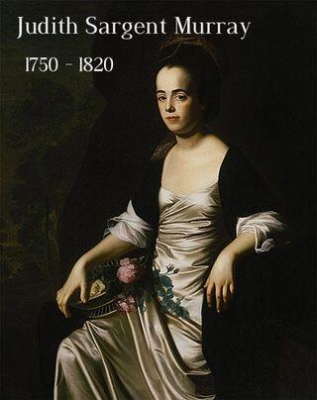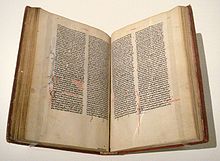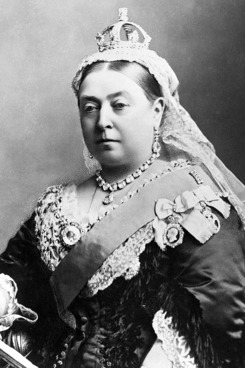Why is Sojourner Truth remembered till today?
 Sojourner Truth was a woman of remarkable intelligence despite her illiteracy. She was born a slave, and her real name was Isabella Baum free. She was sold several times before slavery was abolished in 1827 in New York.
Sojourner Truth was a woman of remarkable intelligence despite her illiteracy. She was born a slave, and her real name was Isabella Baum free. She was sold several times before slavery was abolished in 1827 in New York.Inspired by religion, Truth transformed herself from a domestic servant named Isabella into a powerful preacher named Sojourner Truth. She had great presence. She was tall- some 5 feet 11 inches in height. Her voice was low, and her singing voice was marvellous. Whenever she spoke in public, she also sang. No one ever forgot the power of Sojourner Truth’s singing, just as her wit and originality of phrasing were also memorable. She became an outspoken advocate of women’s rights as well as blacks’ rights. Truth became a national symbol for strong black women, indeed, for all strong women, and her words have inspired black women and poor people all over the world to this day.
 Olympe de Gouges was born to working class parents, but took her place amidst the French intellectuals who advocated the French Revolution. She was a popular playwright, and she strongly advocated the rights of French women. She spoke for not only herself, but many of the women of France, when in 1791 she wrote and published the ‘Declaration of the Rights of Woman and of the Citizen’. Olympe asserted that woman was not simply the same as man, but that she was his equal partner, and so, she should enjoy the same rights as man. Unfortunately, Olympe was too far ahead of her times. For asserting this equality, and repeating the assertion publicly, Olympe de Gouges was arrested in July 1793, four years after the Revolution. She was sent to the guillotine in November of that year.
Olympe de Gouges was born to working class parents, but took her place amidst the French intellectuals who advocated the French Revolution. She was a popular playwright, and she strongly advocated the rights of French women. She spoke for not only herself, but many of the women of France, when in 1791 she wrote and published the ‘Declaration of the Rights of Woman and of the Citizen’. Olympe asserted that woman was not simply the same as man, but that she was his equal partner, and so, she should enjoy the same rights as man. Unfortunately, Olympe was too far ahead of her times. For asserting this equality, and repeating the assertion publicly, Olympe de Gouges was arrested in July 1793, four years after the Revolution. She was sent to the guillotine in November of that year.
 Sophie Germain was born in an era of revolution. In the year of her birth, the American Revolution began. Thirteen years later, the French Revolution began in her own country. She herself became a revolutionary mathematician, number theorist, and mathematical physicist.
Sophie Germain was born in an era of revolution. In the year of her birth, the American Revolution began. Thirteen years later, the French Revolution began in her own country. She herself became a revolutionary mathematician, number theorist, and mathematical physicist.

 Judith Sargent Murray was an eighteenth-century writer known for her essays on education for women, on equality, and on economic independence for all people. She has a series of ‘firsts’ to her name. Judith was the first American woman to self-publish a book, one of the first American writers of plays, and the first woman to have a play produced on stage in America. She was also the first to claim female equality in print, and the only eighteenth century woman to have kept ‘letter books’ in a consistent manner.
Judith Sargent Murray was an eighteenth-century writer known for her essays on education for women, on equality, and on economic independence for all people. She has a series of ‘firsts’ to her name. Judith was the first American woman to self-publish a book, one of the first American writers of plays, and the first woman to have a play produced on stage in America. She was also the first to claim female equality in print, and the only eighteenth century woman to have kept ‘letter books’ in a consistent manner.
 Queen Isabella was the Queen of Castile, who, along with her husband, King Ferdinand of Aragon, financed Christopher Columbus’ expedition to the Indies, which resulted in the discovery of America. She was the half sister of Henry IV, who succeeded to the Castilian throne in 1454. Henry had recognized Isabella as his heir, but when she married Ferdinand of Aragon in 1469, Henry conferred the succession on his daughter. This led to a civil war when Henry died.
Queen Isabella was the Queen of Castile, who, along with her husband, King Ferdinand of Aragon, financed Christopher Columbus’ expedition to the Indies, which resulted in the discovery of America. She was the half sister of Henry IV, who succeeded to the Castilian throne in 1454. Henry had recognized Isabella as his heir, but when she married Ferdinand of Aragon in 1469, Henry conferred the succession on his daughter. This led to a civil war when Henry died. Hatshepsut was the first wife, and Queen of Thutmose II. When he died, she proclaimed herself Pharaoh, denying the old king’s son his inheritance. Hatshepsut was a very unique and intelligent individual. She used various strategies to legitimize her position as pharaoh. She claimed God told her to rule as the king, and so she took on several male adornments while she ruled Egypt. Unlike most women of that time, she attached a false beard, wore male clothing, and was depicted in statutes as a pharaoh, and not as a queen.
Hatshepsut was the first wife, and Queen of Thutmose II. When he died, she proclaimed herself Pharaoh, denying the old king’s son his inheritance. Hatshepsut was a very unique and intelligent individual. She used various strategies to legitimize her position as pharaoh. She claimed God told her to rule as the king, and so she took on several male adornments while she ruled Egypt. Unlike most women of that time, she attached a false beard, wore male clothing, and was depicted in statutes as a pharaoh, and not as a queen.


 ‘The Tale of Genji’ is a Japanese epic that is divided into 54 books or episodes. The action covers the better part of a century, with over 400 characters spanning four generations. The hero, Hikaru Genji or the Shining One, seeks love and happiness driven by the haunting image of his dead mother. Because of his exuberant personality Genji becomes very popular. But the novel that begins with the enchanting atmosphere of a fairy tale ends in the most complex psychological analysis of unhappy people shrouded in blackest gloom.
‘The Tale of Genji’ is a Japanese epic that is divided into 54 books or episodes. The action covers the better part of a century, with over 400 characters spanning four generations. The hero, Hikaru Genji or the Shining One, seeks love and happiness driven by the haunting image of his dead mother. Because of his exuberant personality Genji becomes very popular. But the novel that begins with the enchanting atmosphere of a fairy tale ends in the most complex psychological analysis of unhappy people shrouded in blackest gloom.


 Princess Olga lived between 890 and 969, and was the first female Russian ruler. For almost twenty years, she ruled Kievan Rus. Her very first act as a ruler was to take bloody revenge against the Drevlians, the people who had killed her husband, Prince Igor. Olga took revenge on the Drevlians by having their envoys killed, and their towns burned. She then abolished the annual tribute-collecting journeys made by the Kievan princes, and replaced it with a uniform system of taxation and special government tax-collectors.
Princess Olga lived between 890 and 969, and was the first female Russian ruler. For almost twenty years, she ruled Kievan Rus. Her very first act as a ruler was to take bloody revenge against the Drevlians, the people who had killed her husband, Prince Igor. Olga took revenge on the Drevlians by having their envoys killed, and their towns burned. She then abolished the annual tribute-collecting journeys made by the Kievan princes, and replaced it with a uniform system of taxation and special government tax-collectors.
 Harriet Beecher Stowe was born in Connecticut, U.S.A., into a large family. She was named after her aunt, Harriet Foote, who influenced deeply her thinking, especially with her strong belief in culture. In 1834, Stowe began her literary career when she won a prize contest of the Western Monthly Magazine. Soon, Stowe was a regular contributor of stories and essays. Her first book, ‘The May flower’, appeared in 1843.
Harriet Beecher Stowe was born in Connecticut, U.S.A., into a large family. She was named after her aunt, Harriet Foote, who influenced deeply her thinking, especially with her strong belief in culture. In 1834, Stowe began her literary career when she won a prize contest of the Western Monthly Magazine. Soon, Stowe was a regular contributor of stories and essays. Her first book, ‘The May flower’, appeared in 1843.
 Mary Wollstonecraft was an English philosopher and writer. Her life was not an easy one. Her father was often violent and reckless with money. He also showed a marked preference for her brother, which made her life at home quite miserable. As a result, she became an early feminist who denied male supremacy, and advocated equal education and opportunities for women. She was one of the first people to argue for gender equality, and is best remembered for her work ‘A Vindication of the Rights of Woman,’ written in 1792. She led a radical and exciting life, mainly in London, but with significant time in France during the Revolution, and with life-changing visits to Ireland, Lisbon, Derbyshire, and Scandinavia.
Mary Wollstonecraft was an English philosopher and writer. Her life was not an easy one. Her father was often violent and reckless with money. He also showed a marked preference for her brother, which made her life at home quite miserable. As a result, she became an early feminist who denied male supremacy, and advocated equal education and opportunities for women. She was one of the first people to argue for gender equality, and is best remembered for her work ‘A Vindication of the Rights of Woman,’ written in 1792. She led a radical and exciting life, mainly in London, but with significant time in France during the Revolution, and with life-changing visits to Ireland, Lisbon, Derbyshire, and Scandinavia.